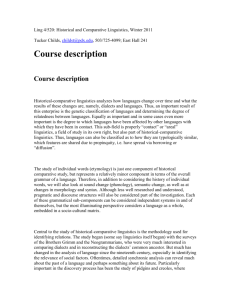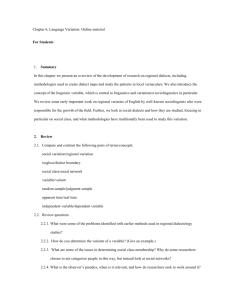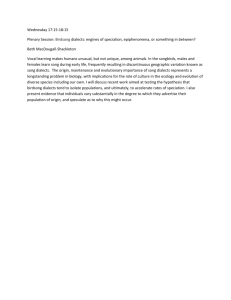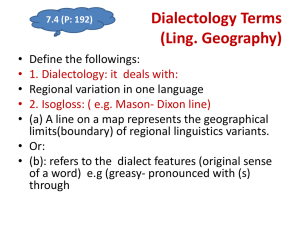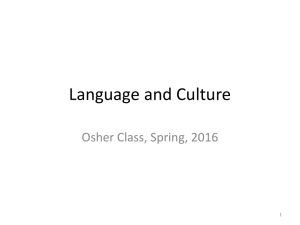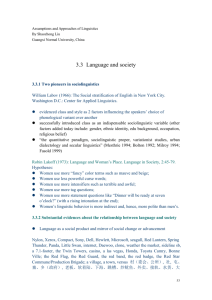File
advertisement
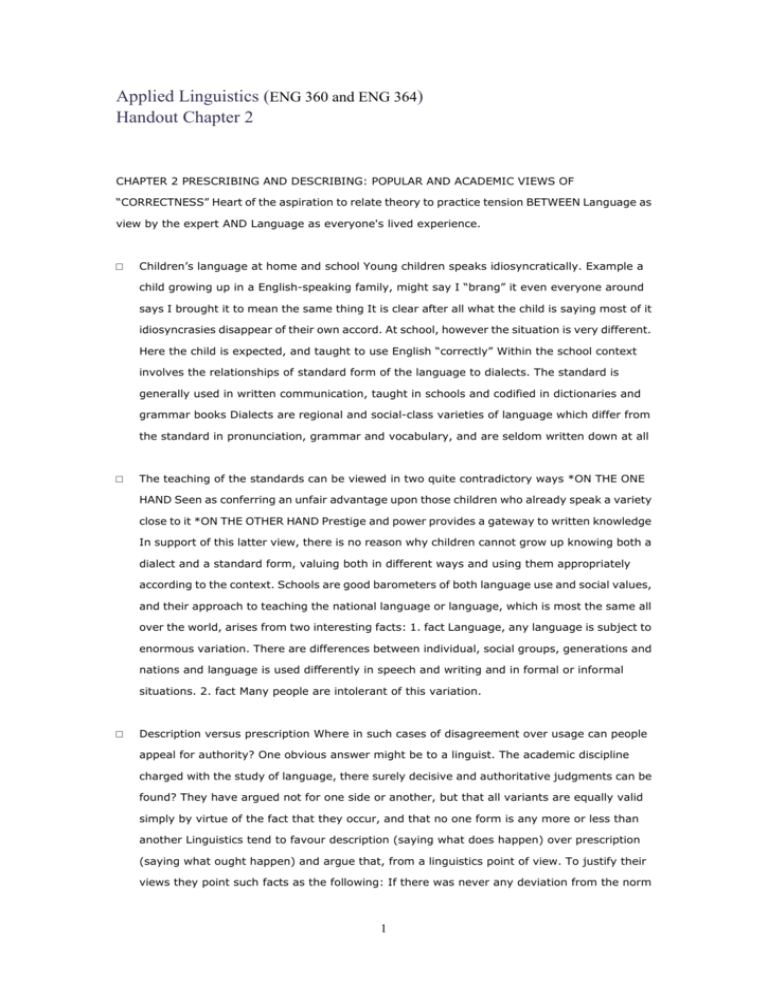
Applied Linguistics (ENG 360 and ENG 364) Handout Chapter 2 CHAPTER 2 PRESCRIBING AND DESCRIBING: POPULAR AND ACADEMIC VIEWS OF “CORRECTNESS” Heart of the aspiration to relate theory to practice tension BETWEEN Language as view by the expert AND Language as everyone's lived experience. □ Children’s language at home and school Young children speaks idiosyncratically. Example a child growing up in a English-speaking family, might say I “brang” it even everyone around says I brought it to mean the same thing It is clear after all what the child is saying most of it idiosyncrasies disappear of their own accord. At school, however the situation is very different. Here the child is expected, and taught to use English “correctly” Within the school context involves the relationships of standard form of the language to dialects. The standard is generally used in written communication, taught in schools and codified in dictionaries and grammar books Dialects are regional and social-class varieties of language which differ from the standard in pronunciation, grammar and vocabulary, and are seldom written down at all □ The teaching of the standards can be viewed in two quite contradictory ways *ON THE ONE HAND Seen as conferring an unfair advantage upon those children who already speak a variety close to it *ON THE OTHER HAND Prestige and power provides a gateway to written knowledge In support of this latter view, there is no reason why children cannot grow up knowing both a dialect and a standard form, valuing both in different ways and using them appropriately according to the context. Schools are good barometers of both language use and social values, and their approach to teaching the national language or language, which is most the same all over the world, arises from two interesting facts: 1. fact Language, any language is subject to enormous variation. There are differences between individual, social groups, generations and nations and language is used differently in speech and writing and in formal or informal situations. 2. fact Many people are intolerant of this variation. □ Description versus prescription Where in such cases of disagreement over usage can people appeal for authority? One obvious answer might be to a linguist. The academic discipline charged with the study of language, there surely decisive and authoritative judgments can be found? They have argued not for one side or another, but that all variants are equally valid simply by virtue of the fact that they occur, and that no one form is any more or less than another Linguistics tend to favour description (saying what does happen) over prescription (saying what ought happen) and argue that, from a linguistics point of view. To justify their views they point such facts as the following: If there was never any deviation from the norm 1 then languages would never change. We would never gain independence. Webster’s American Dictionary Of The English Language would have the same standing as a bad piece of school work, and it would be as incorrect to write “color” in Washington as in London. □ Dialects have their own consistent governed grammars in which every bit as complex and expressive as those of standard form. The so-called double negative:- “I didn’t do nothing” for example, often castigated as sloppy and illogical-is used with consistency in certain dialects of English and equivalents can be found in the standard forms of other languages. The standard form of a language is often very similar to the usage of the most economically and politically powerful class or region for example southern England in Britain and Castle in Spain. It can be regarded as a dominant dialect. These arguments depend on a detachment from social reality and very much at odds with a deeply felt public view of language. Linguistics may asume a superior air and insist that their concern 2



